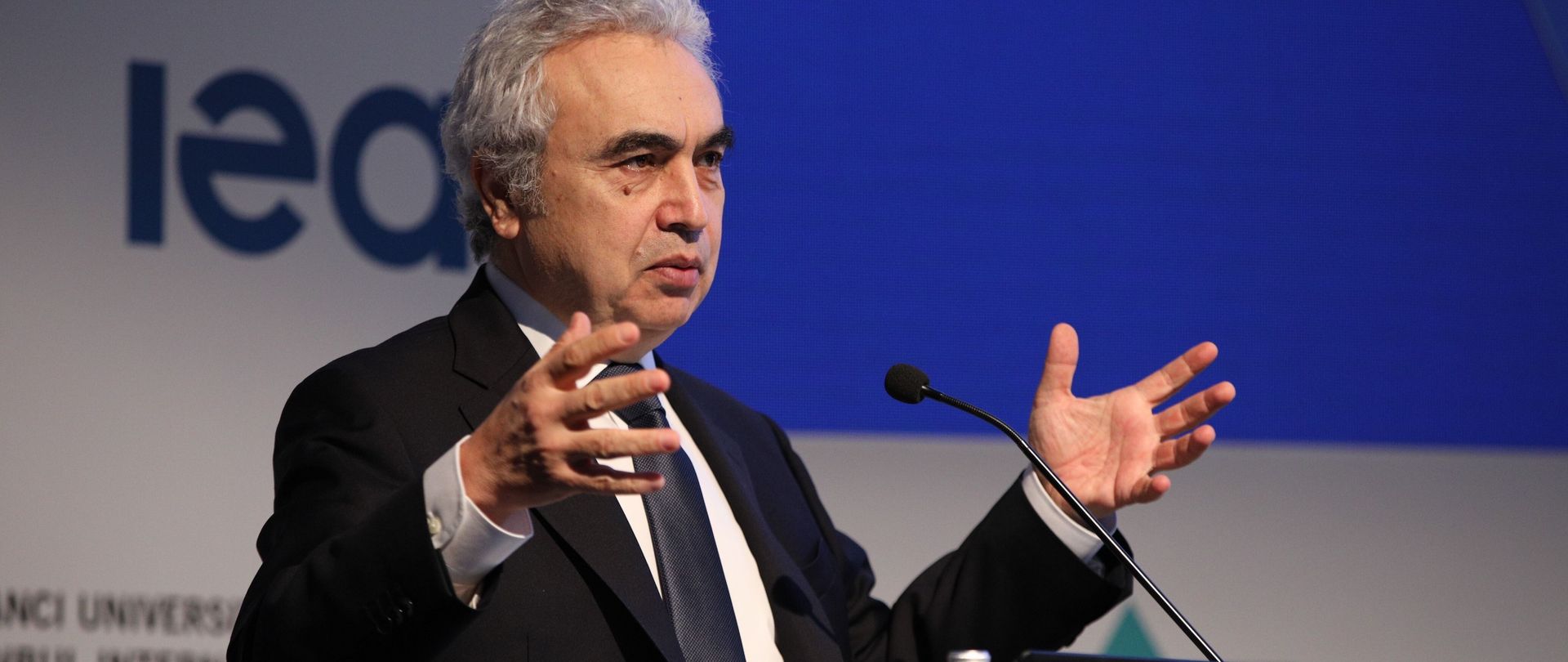
IEA Director Fatih Birol during a presentation at Sabanci University in Istanbul
© picture alliance / AA | Celal Gunes
Global Energy Governance
The institutional landscape for shaping and managing international energy relations is fragmented. Existing organizations such as the IEA, OPEC, IRENA, IEF, IAEA, and the European Energy Community are either limited to individual energy sources, consumers, producers, or specific regions. This reflects not only the strategic importance of the energy sector, where the principle of national sovereignty prevails, but also the very different starting points of individual countries, which pursue differing strategies with regard to climate change, energy security, and economic prosperity. The biggest shortcoming of these organizations is that they often no longer reflect actual energy flows: Brazil, India, China, and South Africa in particular are mostly left out. Global initiatives within the framework of the G7/8, G20, or UN are selective in nature, the failure to implement declarations is a weakness, and there is no legal binding force. In general, the international community faces the major challenge of achieving the transition to a climate-neutral energy system by 2050. At the same time, it is necessary to ensure the conventional, i.e., fossil-based energy supply for a transitional period without consolidating it. Institutional conditions must be created to effectively meet this challenge.
Publications
-
The Geopolitics of the Energy Transition in Greater Asia
Background, Dynamics, and Trend Mapping from within the Region
SWP Comment 2025/C 01, 13.01.2025, 7 Pagesdoi:10.18449/2025C01
-
Middle Ground Powers im Energiesektor
in: Mittlere Mächte – einflussreiche Akteure in der internationalen PolitikBeitrag zu einer Sammelstudie 2024/S 01, 23.01.2024, 94 Pages, pp. 71–74
-
Coal, Oil and Gas Going into Extra Time
The Narrative of Abated Fossil Fuels Threatens to Undermine the Paris Climate Targets
SWP Comment 2023/C 54, 27.11.2023, 7 Pagesdoi:10.18449/2023C54
-
US–China rivalry and its impact on the energy transformation
Difficult cooperation fraught with dilemmas
in: Daniel Scholten (ed.), Handbook on the Geopolitics of the Energy Transition, Elgar Handbooks in Energy, the Environment and Climate Change, Cheltenham: Edward Elgar Publishing, 2023, Chapter 6, pp. 107-123 -
Green Industrial Policy – Joe Biden’s Made in (All of) America Energy Policy
in: SPOT ON, Aspen Institute Germany, June 2023 -
The G7 Summit: Advancing International Climate Cooperation?
Options and Priorities for the German G7 Presidency
SWP Comment 2022/C 34, 19.05.2022doi:10.18449/2022C34